Climbing Doi Suthep Mountain at sunset, taking in a stunning panoramic view of Chiang Mai from above while listening to the prayers of Buddhist monks at Wat Phra That Doi Suthep, and feeling the cool breeze on your face after a hot and tiring day—this is easily one of the best experiences the city has to offer.
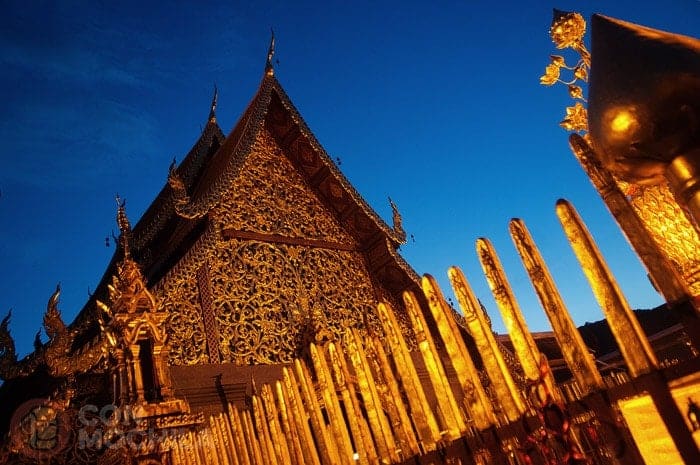
That’s why, for its views, its beauty, and its sense of peace, we’ve returned many times to visit this iconic temple in northern Thailand.
The most affordable option is to climb Doi Suthep on a songthaew, one of those red vans that Chiang Mai is full of.
You can also get there by motorbike if you have one; you can’t miss it with Google Maps, so here’s the location.
Alternatively, you can book excursions to visit this temple along with others, a great way to do it comfortably and worry-free:
Located about 13 km west of downtown Chiang Mai and sitting nearly 1,700 meters above sea level, Wat Phra That Doi Suthep is revered by Thai Buddhists and is a favorite among travelers visiting Thailand.
Despite its popularity, which means it’s almost always bustling with visitors, the temple’s charm remains intact. Its splendor continues to captivate everyone who arrives.
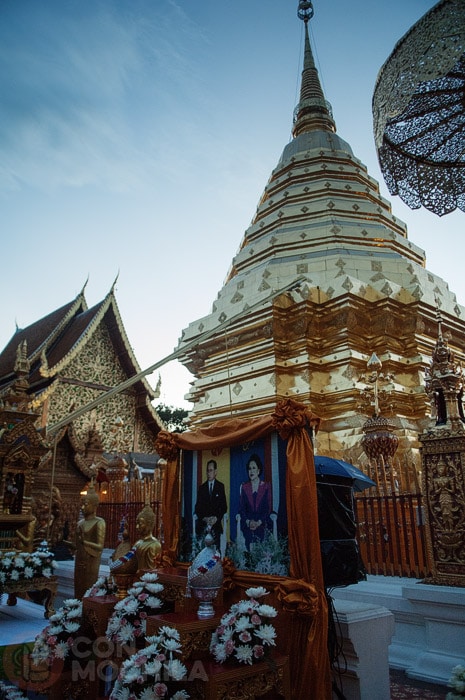
As soon as you arrive, you’ll be greeted by a long staircase flanked by two colorful, imposing nagas, that run the entire length of its 306 steps.
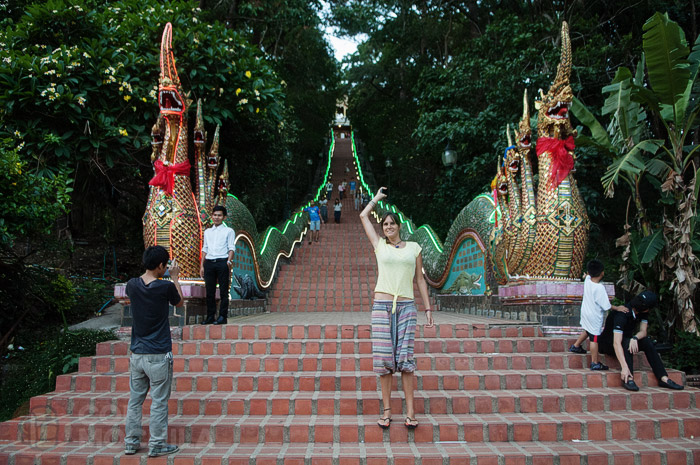
You have two options: take a deep breath and climb for a bit of exercise or pay to take the funicular up.

Once at the top, before entering the temple’s central area, it’s well worth walking around the perimeter and soaking in every detail.
You’ll find the statue of the white elephant—central to the legend of the temple’s founding—a figure of Ganesha, a curious garden full of hard-to-interpret statues, a small shop, and young monks walking around or preparing for ceremonies.
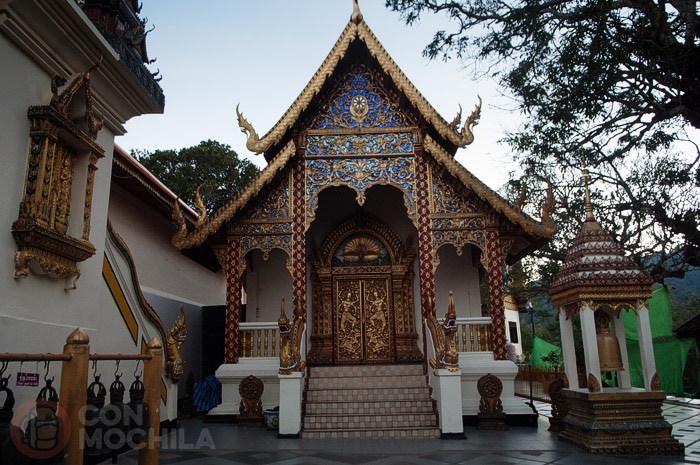
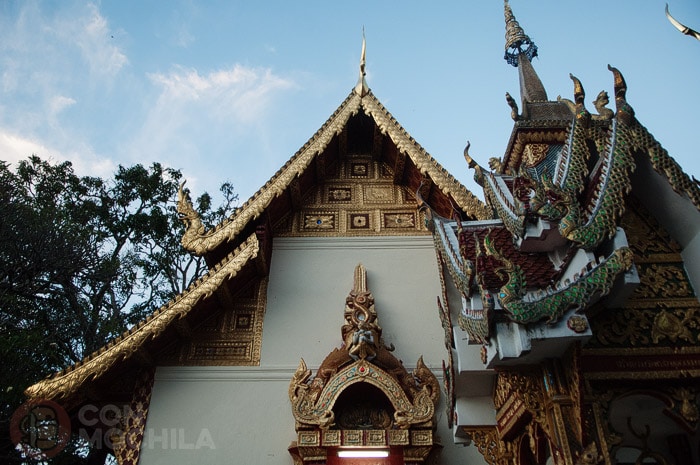
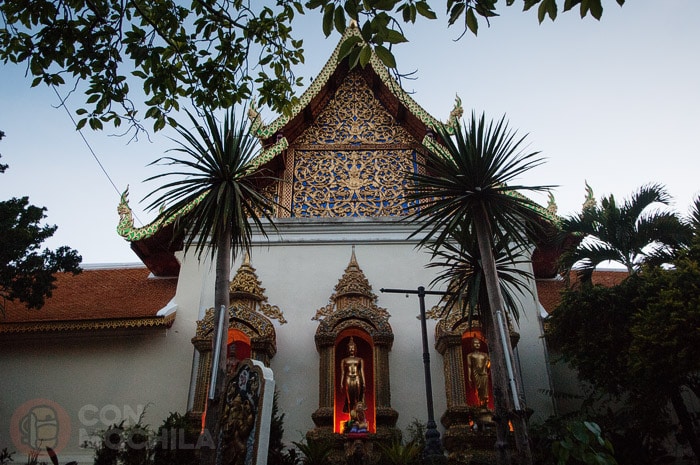
From the viewpoint on the southwest side, weather permitting, you’ll get sweeping views of Chiang Mai. What’s really fascinating, though, is focusing on the airport below and watching planes land and take off.
After exploring the outer grounds, you’ll need to remove your shoes and climb a small staircase that leads to the temple’s main area, where the golden chedi is located. With a bit of luck, you may witness a live ceremony—we’ve seen two, so they seem to happen quite frequently.
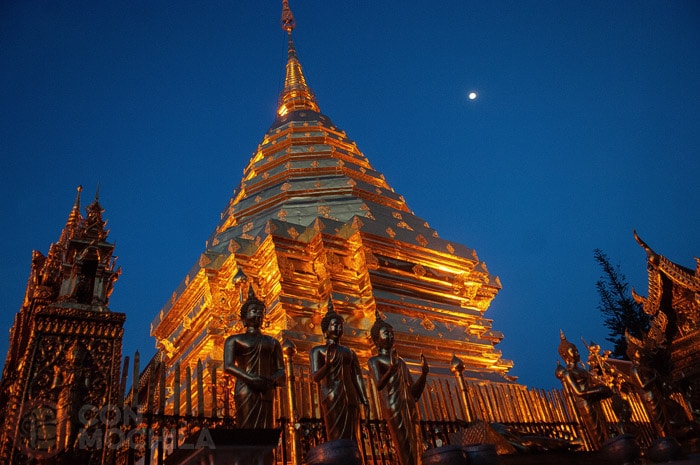
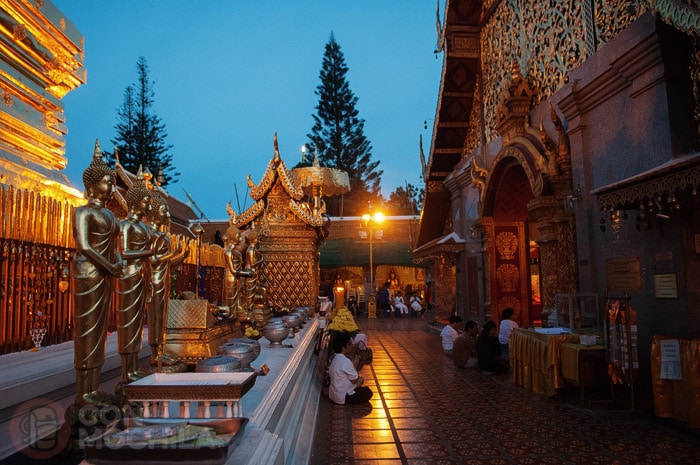
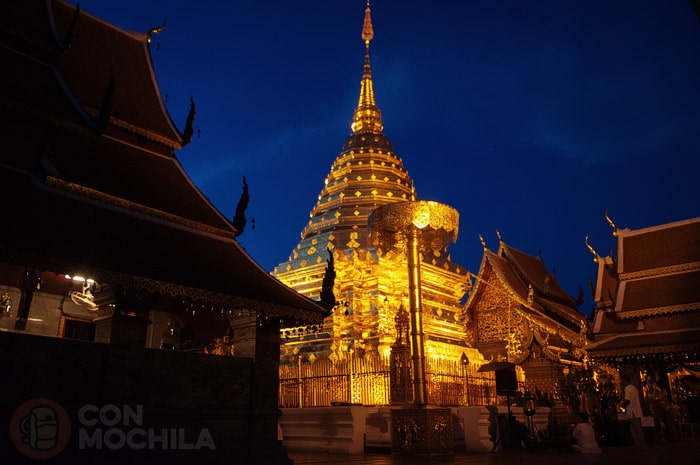
Built in 1383 by King Kue Naone, the stupa is believed to house a sacred relic—a bone from the Buddha—brought by a monk from Sukhothai. According to legend, the relic was placed on a white elephant, which wandered until it reached this very mountain.
There, it trumpeted three times and collapsed—an event interpreted as a divine sign.
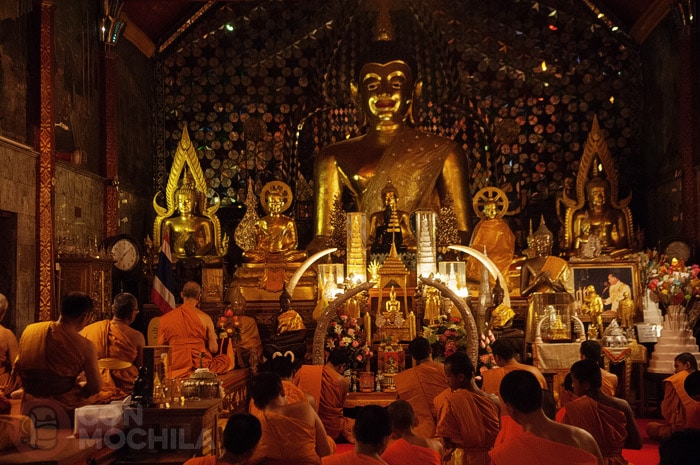
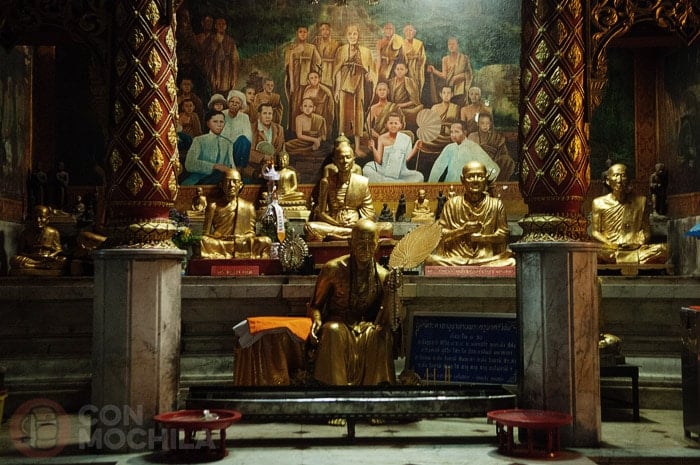
Within this area of the temple, you’ll also find many Buddha images, including the eight that correspond to the days of the week (Wednesday has two—one for morning and one for evening), a feature commonly seen in Thai temples.
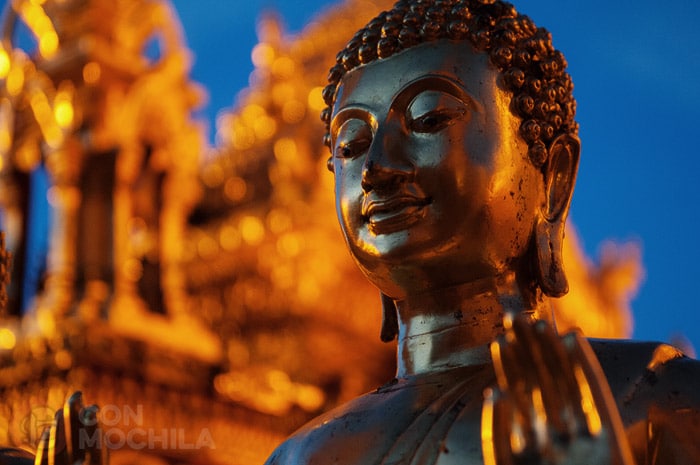
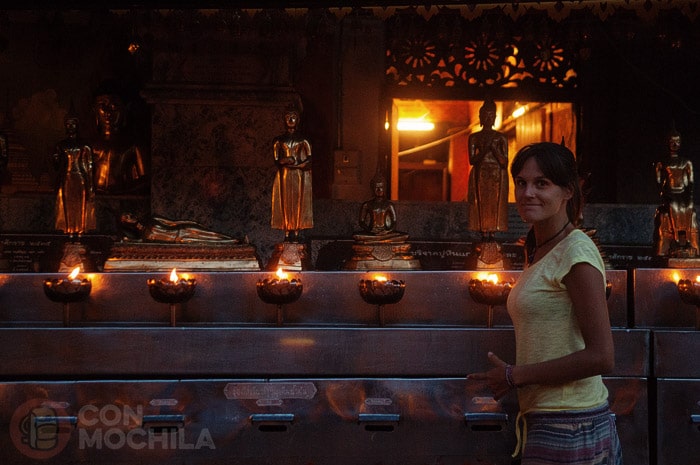

The best time to visit is at dusk, when you can enjoy the temple both in daylight and illuminated at night, with the golden hues of its structures glowing beautifully under the lights.
Don’t miss the chance to stop at one of the viewpoints along Doi Suthep Mountain after dark—when Chiang Mai is fully lit, the view is truly breathtaking.
Wat Phra That Doi Suthep is also popular with travelers thanks to its role as an international Buddhist center offering Vipassana meditation courses.
ACTIVE CAMPAIGN !
Until december 1st, you can get an automatic 15% discount on your Heymondo travel insurance.